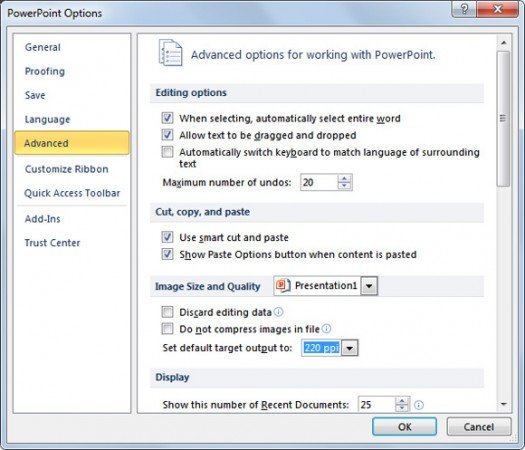

When presenting on a television screen, then you must respect the aspect ratio of your presentation and your television. The resolution of the presentation that you are designing is probably not relevant since you are probably using a projector on a wall. Save the presentation and evaluate it size or quality (whatever is your priority). There you will have the option to compress the image to a lower resolution (for this or all images of the presentation). Next step is to make a copy of the presentation and then you select your first picture, go to Picture Tools, Format tab, Compress Pictures. It will result in a large file, but you will have the maximum of information or details on your slides. Export the images from InDesign, in the highest resolution possible.

Based on that info, you can make decisions on the image resolution, before importing them into PowerPoint.īut maybe a tip, or what I would do. You need to know the resolution of your display device (computer or projector/television) and the purpose of your presentation. So, the resolution set for your images, is not that important. That results in an unsharp image on the TV. This would mean, that one pixel of your image would be stretched out and serve 4 pixels on your television. When you are using a large 4K television screen (this is 4096 x 2160 px) for this, then of course this resolution of 960 x 720 pixels in total, is way too low. But, if you want to use this presentation as an advertising or promotion presentation with your company’s products, then you should look at the resolution of your display device. Important is: what is your priority? Small file size for easy distribution? Then you are fine already with this small resolution. Using 96 px/in will keep your file size to a minimum. So, with this number of slides, you will face probably a larger file. So, I guess you are creating some kind of brochure or business reporting, and not a sales presentation. First of all, 210 slides in one presentation is a lot. So your real question is, is a resolution of 96 pixels/inch enough for my presentation. When you have pictures and videos on your slides, or when you want to have high quality output where every pixel is worth the effort, then it is needed that you set the slide dimension correct for the highest quality.

So your nice picture might not be that nice when enlarged.įor the resizing of the pictures and videos you have to be careful. Basically it will double pixels, but it is more complex, even when multiplying and rounding pixels. When a picture is enlarged, a computer program has to ‘invent’ pixels. The colors of the pixels on a picture are so much more complex and diverse. A picture is more complex than just a regular black and white rectangle with text. The problem will occur when you are using other types of shapes like images and videos on your slide now. The only problem that might arise, is mistakes or unexpected results by roundings. A black pixel of your text, will result in a double black pixel now. You will see that it is bigger, but the relation between height and width is respected, and basically, nothing is wrong. And your border of 10 pixels, will be displayed as a border of 20 pixels now. So your textbox of maybe 500 by 150 pixels, will be converted into a textbox of 1000 by 300 pixels. So PowerPoint will double each size automatically. The presentation setup is 50% of your final output dimensions. Imagine you have a textbox on a slide with text in black, on a white background and a rectangle around it. PowerPoint will reduce the output size when the presentation design is larger than the output size. When you run a smaller PowerPoint slideshow on a larger television or computer screen, then PowerPoint will always enlarge the presentation so that it will fit on your screen. And this is not ideal when using PowerPoint for digital signage. Default PowerPoint presentations are not in HD they are of lower quality. You see already a problem with default PowerPoint presentations. So we know that the default dimension of a presentation is 1280 x 720, and that your HD television is capable of displaying 1920 x 1080.


 0 kommentar(er)
0 kommentar(er)
